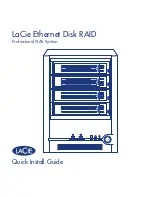
English |
23
Bosch Power Tools
2 610 021 416 | (23.11.11)
– Push the depth stop
8
down until it faces against the turret
stop
14
. Set the slide with the index mark
9
to the “0” po-
sition on the scale for depth-of-cut adjustment
7
.
– Set the depth stop
8
to the required depth-of-cut and tight-
en the wing bolt for the depth stop
10
. Pay attention not to
misadjust the slide with the index mark
9
again.
– Press the release lever for plunge action
21
and guide the
router to the uppermost position.
For deep cuts, it is recommended to carry out several cuts,
each with little material removal. By using the turret stop
14
,
the cutting process can be divided into several steps. For this,
adjust the desired depth-of-cut to the lowest step of the turret
stop and select the higher steps first for the initial cuts. The
clearance of the steps is approx. 3.2 mm.
After a test run, the depth-of-cut can be set to the required di-
mension by turning the sleeve
11
; turning in anticlockwise di-
rection increases the depth-of-cut; turning in clockwise direc-
tion decreases the depth-of-cut. The mark on the depth stop
8
can be used for guidance. One revolution corresponds with
a depth-of-cut travel of 0.8 mm. Any of the four graduation
marks on the upper edge of the sleeve
11
changes the depth-
of-cut travel by 0.2 mm.
Example:
The required depth-of-cut shall be 10.0 mm; the
test cut resulted to a depth-of-cut of 9.6 mm.
– Press the release lever for plunge action
21
and guide the
router to the uppermost position.
– Rotate the sleeve
11
by 0.4 mm/2 graduation marks
(equals the difference from the set value to the actual val-
ue) in anticlockwise direction.
– Check the selected depth-of-cut by carrying out another
trial cut.
Adjusting the Depth-of-cut on the Non-plunge Base
(see figure H)
For adjustment of the depth-of-cut, proceed as follows:
– Open the clamping lever for the non-plunge base
20
.
– Coarse pre-adjustment of the routing depth is possible in 3
steps. For this, press clamping lever
26
and slide the rout-
ing motor
1
up or down in the non-plunge base
3
, until it,
with the clamping lever
26
released, is locked in one of the
3 notches
27
. The notches each have a clearance of
12.7 mm (0.5 ").
– The adjustment knob
25
is used for fine adjustment of the
depth-of-cut. Turning in clockwise direction increases the
depth-of-cut and turning in anticlockwise direction de-
creases the depth-of-cut. The depth-of-cut travel is gradu-
ated in inch and millimeter on the scale of the adjustment
knob
25
. The maximum adjustment range is 23 mm. The
scale for depth-of-cut adjustment
24
is used for additional
guidance.
Example:
The required depth-of-cut shall be 10.0 mm; the
test cut resulted to a depth-of-cut of 9.5 mm.
– Set the scale of the adjustment knob
25
to “0” without
changing the setting of the adjustment knob
25
itself. Then
set the adjustment knob
25
to the value “0.5” by turning in
clockwise direction.
– Check the selected depth-of-cut by carrying out another
trial cut.
Working Advice
Direction of Feed and Routing Process (see figure I)
f
The routing process must always be carried out against
the rotation direction of the router bit 18 (up-cutting
motion). When routing in the direction with the rota-
tion of the router (down-cutting), the machine can
break loose, eliminating control by the user.
For routing with the plunge base
2
, proceed as follows:
– Adjust the required depth-of-cut; see Section “Adjusting
the Depth-of-cut”.
– Place the machine with the router bit mounted on the
workpiece to be machined and switch the power tool on.
– Press the release lever for plunge action
21
down and
slowly guide the router down until the set depth-of-cut is
reached. Let go of release lever
21
again to lock this plung-
ing depth.
– Carry out the routing process applying uniform feed.
– After finishing the routing process, guide the router up to
the uppermost position.
– Switch the power tool off.
For routing with the non-plunge base
3
, proceed as follows:
–
Note:
Take into consideration that for routing work with
the non-plunge base
3
, the router bit
18
always protrudes
out of the base plate
13
. Do not damage the template or
the workpiece.
– Adjust the required depth-of-cut; see Section “Adjusting
the Depth-of-cut”.
– Switch the machine on and guide it to the location subject
to routing.
– Carry out the routing process applying uniform feed.
– Switch the power tool off. Do not place the power tool
down until the router bit has come to a standstill.
Routing with Auxiliary Guide (see figure J)
For working large workpieces, e. g., when routing grooves, a
board or straight edge can be securely fastened to the work-
piece as an auxiliary guide. The multifunction router can be
guided alongside the path of this auxiliary guide. When using
the plunge base
2
, guide the guide plate (flattened side) of the
multifunction router alongside the auxiliary guide.
Shaping or Molding Applications
For shaping or molding applications without the use of a par-
allel guide, the router bit must be equipped with a pilot or a
ball bearing.
– Guide the switched on power tool from the side toward the
workpiece until the pilot or the ball bearing of the router bit
faces against the workpiece edge to be machined.
– Guide the power tool alongside the workpiece edge with
both hands, paying attention that the router is positioned
rectangular. Too much pressure can damage the edge of
the workpiece.
OBJ_BUCH-100-004.book Page 23 Wednesday, November 23, 2011 11:55 AM
















































